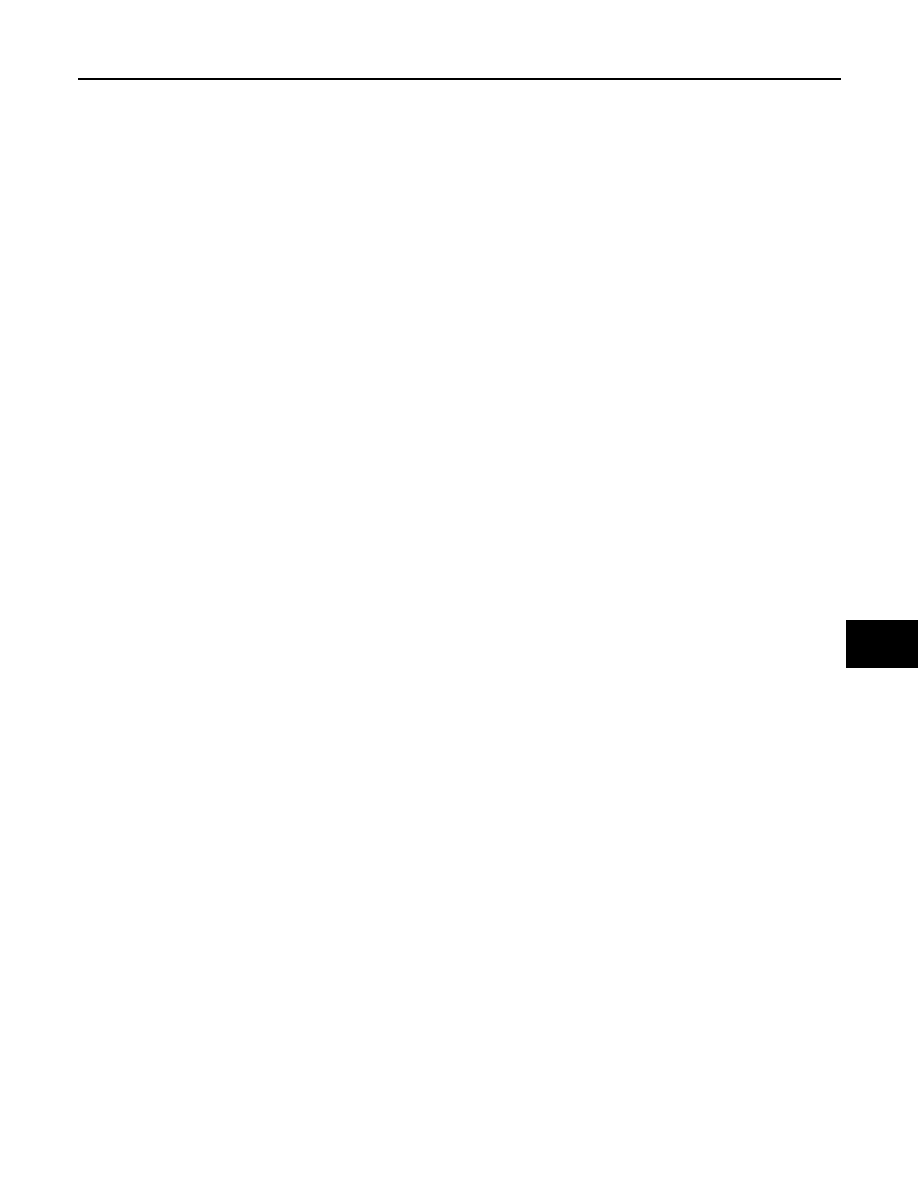Nissan Pathfinder (2008 year). Manual - part 464

SQUEAK AND RATTLE TROUBLE DIAGNOSES
INT-5
< SYMPTOM DIAGNOSIS >
C
D
E
F
G
H
I
K
L
M
A
B
INT
N
O
P
2.
Trunk lid striker out of adjustment
3.
The trunk lid torsion bars knocking together
4.
A loose license plate or bracket
Most of these incidents can be repaired by adjusting, securing or insulating the item(s) or component(s) caus-
ing the noise.
SUNROOF/HEADLINING
Noises in the sunroof/headlining area can often be traced to one of the following:
1.
Sunroof lid, rail, linkage or seals making a rattle or light knocking noise
2.
Sun visor shaft shaking in the holder
3.
Front or rear windshield touching headliner and squeaking
Again, pressing on the components to stop the noise while duplicating the conditions can isolate most of these
incidents. Repairs usually consist of insulating with felt cloth tape.
OVERHEAD CONSOLE (FRONT AND REAR)
Overhead console noises are often caused by the console panel clips not being engaged correctly. Most of
these incidents are repaired by pushing up on the console at the clip locations until the clips engage.
In addition look for:
1.
Loose harness or harness connectors.
2.
Front console map/reading lamp lens loose.
3.
Loose screws at console attachment points.
SEATS
When isolating seat noise it's important to note the position the seat is in and the load placed on the seat when
the noise is present. These conditions should be duplicated when verifying and isolating the cause of the
noise.
Cause of seat noise include:
1.
Headrest rods and holder
2.
A squeak between the seat pad cushion and frame
3.
The rear seatback lock and bracket
These noises can be isolated by moving or pressing on the suspected components while duplicating the con-
ditions under which the noise occurs. Most of these incidents can be repaired by repositioning the component
or applying urethane tape to the contact area.
UNDERHOOD
Some interior noise may be caused by components under the hood or on the engine wall. The noise is then
transmitted into the passenger compartment.
Causes of transmitted underhood noise include:
1.
Any component mounted to the engine wall
2.
Components that pass through the engine wall
3.
Engine wall mounts and connectors
4.
Loose radiator mounting pins
5.
Hood bumpers out of adjustment
6.
Hood striker out of adjustment
These noises can be difficult to isolate since they cannot be reached from the interior of the vehicle. The best
method is to secure, move or insulate one component at a time and test drive the vehicle. Also, engine RPM
or load can be changed to isolate the noise. Repairs can usually be made by moving, adjusting, securing, or
insulating the component causing the noise.